I don’t know if this is a new thing, but it seems like five seasons is a sweet spot for shows. Most (not all) shows that continue beyond five to seven seasons inevitably lose their audience’s passion along the way. It’s not that they necessarily turn into bad shows, but at some point stories need to wrap up, and if they go on too long, they will get boring. I personally have experienced this with several shows I was hardcore obsessed with for years (see: Shameless, Weeds, even Buffy, please don’t hate me for this, I’ll finish it eventually. Maybe).
So it was bittersweet for me and for all of the Orphan Black fandom when it was announced last year that the fifth season of this show would be its last. It makes perfect sense to go out on top, and go out on top is what Orphan Black did. The final season arrived on the heels of long-overdue mainstream hype, bolstered by Tatiana Maslany’s Emmy win the year before. But a show so beloved would be missed, which is something it wouldn’t be as strongly if it had crossed into Overdone Land. (Side note, it was just announced that Killjoys, another Strong Female Character-led show that just wrapped its third season, will also end after its fifth season. I have no idea if this decision was influenced by the success of the Orphan Black 5-season arc, but it could be!).
Orphan Black didn’t fizzle; it punched the air in victory. It’s been a few weeks since “To Right the Wrongs of Many” aired, and the emotional dust has settled a bit. Time to look back at the season arc and talk narrative!
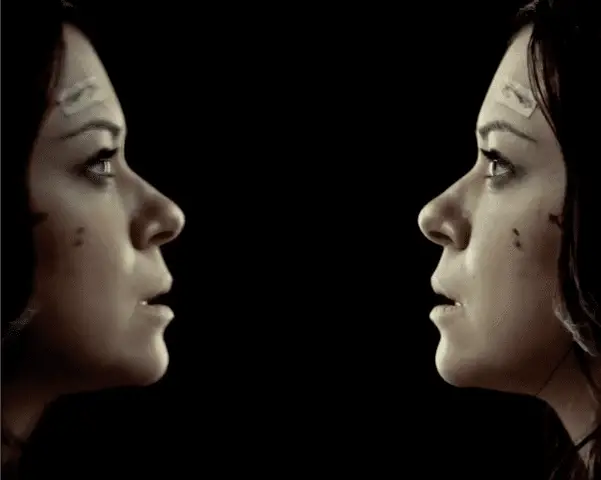
Loud and Quiet: Pacing
This season was pretty distinctly split in half, with the first half paced more slowly than the second. The start of the season was island-heavy; three of our main clones (Sarah, Cosima and Rachel) were on it in the first episode, and Cosima stayed there until episode six.
The Island of Westmoreau was painted as a remote, quiet place headed by an old man and consisting of complacent villagers living off of the land. But it was also the seat of the head of Neolution and the harbor of Ultimate Patriarchy—not just the season Big Bad, but the series one. Focusing a good deal of story on this strange, muted place with evil pulsing underneath was a departure from what we were used to seeing from this show, and the island was very different than the shiny, modern offices of DYAD or Coady’s season three military base.
It’s kind of perfect that the layers of Neolution the clones peel through across the seasons become increasingly dark, quiet and simple. Leekie, with his Freaky Leekies and their night club scene, was the pop version of Neolution and seemed to be the enemy in season one. Then came the bigger web of DYAD, which included Rachel and to an extent Paul, all wearing shiny veneers both in actual clothing and in the corporate cloak of glass offices and swanky hotel suites. Coady’s Castor military base was dusty and gritty but still high-tech and ultimately a splinter of the DYAD-controlled arm of Neolution.
The Proletheans were where the insidious calm of patriarchal control began to be revealed. They had very few bells and whistles; Henrik Johanson’s evolution-controlling goals may have been somewhat futuristic, but his methods (ahem, using livestock insemination tools) were not. Finally, we arrive at self-sustaining Neolution Island, where life for the villagers is even more primitive than for the Proletheans, and the man in the castle is softspoken and surrounded by relics of the past. Or, as Cosima put it, a lot of dead things.
All of this is beautifully laid out to show that the path to the root of patriarchy leads us to the past. Neolution is supposedly new and revolutionary, but fragile men with far too much power seeking to control the bodies of people “lower” than them—including women—is old as hell. And, as portrayed by Westmoreland, dying.
With this in mind, it’s fitting that the establishment of Westmoreland as the Big Bad in the first part of the season is a story slowly and methodically built. He is an old man, living in an old world, but from him stems everything that’s enveloped our sestras from the start. That everything grows quiet as they approach him makes sense; it’s the calm before they blow all of it up.
Slower pacing in the first half also makes room for faster pacing in the second, which is not only how Orphan Black has operated for the past couple of seasons, but generally makes for a thrilling buildup. And it’s not like there weren’t plenty of heart-stopping moments in that first half. Notably, we got MK’s brutal murder and the big reveal of Coady in the mental institution.
The slower pacing also allows for something that Orphan Black has been building (brilliantly, in my opinion), since the beginning of season four: backstories. The show has used flashbacks more effectively than most TV I’ve seen. Beyond that, they took time this season to focus large chunks of time on individual clones and their relationships, even without flashbacks, to add depth to their characters.
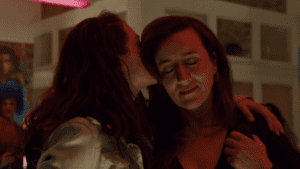
This is possibly the best storytelling decision the Orphan Black team could have made. When I read or hear criticism of the show, it’s always about how weird the plot got at some point. Many people were lost with the Castor storyline, and with such a sprawling web of DNA-related science (much of which is being played out in actual headlines right now), there are bound to be holes and gaps that will grate on viewers. But by developing the characters above all else, Orphan Black brings the story down to earth, and explores what it means to be human.
And anyway, the heart of why anyone watches this show is Tatiana Maslany and the incredible people she has embodied for us on screen. Digging into the individual characters’s stories showcases her talent to the greatest extent possible, and that is what hooks people onto the ride.
Trust Women
I love that the counter to Westmoreland’s Patriarchy is S’s Matriarchy. While Sarah is the protagonist of the show, S is the team leader. Her death was even more devastating than PT’s was satisfying, which I think says a lot about how the opposing forces of Team Neolution and Team Leda were set up from the start. It’s telling that S and her chickens—a brood that grew to include many new children and Good Humans like Donnie and Art—intertwined into a family.
They had many moments of distrust, anger, sadness, and rage amid their various relationships, but they ultimately loved, supported, and depended on each other. This is very different from Neolution’s splintered, cold existence, which was more of a collective power trip than anything else. And while PT’s last words were taunts to Sarah, weak attempts to assert his power even in his dying breath, S’s last word was “chickens,” aka family.
This season, even more than previous seasons, featured our main women making decisions about their bodies and their lives. We had Cosima refusing to bend to PT trying to make her mercy-shoot Janis, leading to her wonderful line, “You gave me life, you can take it away, but you can’t take away my humanity.” (Cosima always has the best lines). We saw Alison make the decision to expand her own understanding of her identity by not only doing some mental/spiritual work, but cutting her hair and getting tattooed.
In one of the most important scenes of the season, Sarah, in a flashback, decides to keep Kira after S’s declaration that “No one can make the decision but you.” S decides to take her family’s survival into her own hands and sacrifices herself in full knowledge of what she is doing. (I’m still not convinced it had to happen that way, but it had its intended dramatic effect). Rachel did the biggest 180 of any character, proving instrumental to the freedom of the Ledas and even gouging out her own eye. Her journey was more about emancipation than any of the others, because she had led her life inside Neolution. It wasn’t until this season that she used her agency to break those chains, simultaneously freeing herself and losing everything she had known up that point.
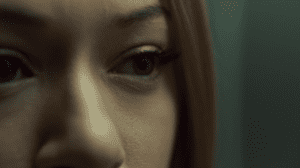
One of the greatest through-lines of the series and of this season in particular is female autonomy and bodily agency. Women’s bodies are political. Political biology and cutting-edge human DNA science are perfect places from which to dive deep into character development. With this as a baseline, Graeme Manson, John Fawcett and Cosima Herter set themselves up for success if they could keep the story character-driven amid the racing context. With Tatiana Maslany, they had the perfect teammate to pull such a thing off.
As Usual, Context is Everything
The Orphan Black team, notably creators Graeme Manson and John Fawcett along with Tatiana Maslany, have not been quiet about how the 2016 US election influenced them to double down on the Smash The Patriarchy themes this season. All of them have talked about their increasing awareness and embrace of feminism since the first season, and credit audience engagement and feedback, among other things, with steering the OB ship into blatant feminist territory over the course of the series.
In the final trip, after lots of lower toxic-masculinity-bearing branches of what Manson and Fawcett describe as the patriarchal tree—of which Leekie, Proletheans, Castors, Neos, Ferdinand were all branches—the enemy at the top was a fragile old white guy. Tatiana Maslany minced no words about the parallels between Westmoreland and 45 in an interview with Marie Claire:
“Given the political climate right now, it’s really interesting to have the person at the top be this desperately insecure, powerful, yet completely inept being—this guy, this patriarch who is completely self-motivated and doesn’t have any interest in whose lives he’s destroying. It’s all about him and all about sustaining life, this legacy of his life that he wants to create. It’s such an empty thing.”
I mean. She described him perfectly.
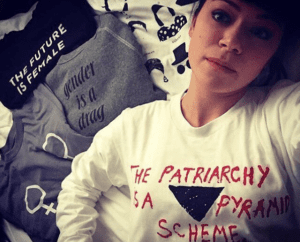
This is a great example of art imitating life imitating art. OB is not the only place in pop culture where this is happening, of course, but given its establishment as an entirely female-driven show it was fertile ground for such a narrative. It’s important to note that OB includes some pretty fantastic examples of men who are genuine, strong, loving, smart, family-oriented (including chosen-family oriented, because that’s what the characters mostly are to each other), etc. as counters to the patriarchal structure of Neolution they’re all ultimately trying to dismantle and live in freedom from.
The inclusion of complex male characters in addition to the complex female characters accomplishes a lot. It’s not just a story of Strong Women taking down Evil Men. It’s about humans who care and the systems that seek to control them in the name of power.
Notable Firsts
Orphan Black is one of the only series, let alone ones with mainstream success, to be entirely driven by women, and many of them. The women in this story are complex and fully-formed. This show blows the Bechdel test out of the water. The sestras, S, Delphine, Adele, and the rest, they talk to each other, problem solve, laugh, cry, all the things. The entire core story revolves around them. There were almost no heterosexual romantic storylines whatsoever either. And the men in the story are part of the team, not the final words. They are equal to the women, but they don’t drive the narrative.
For me, that has been incredibly refreshing. In the end, this show centered on relationships between women: motherhood, sisterhood, and lesbians. And it was still so exciting! Like, objectively!
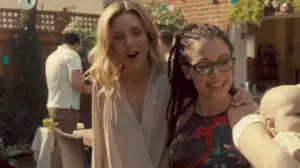
This is also one of the first and only shows to represent queer characters in a nuanced and normalized way. That the only lasting romantic relationships are queer ones is kind of unheard of. And I’m pretty sure Cosima and Delphine are the first lesbian pair to have fallen in love in the first season and still be alive and together at the End of the Entire Series. This is technically true of Felix and Colin too, but Colin was absent for most of the series.
While I’m sure the Spring Slaughter of 2016 made the OB team think twice about whether to make shot!Delphine actually dead (as acknowledged by Tatiana Maslany in her Marie Claire interview), they found a way to continue telling this part of the story in a compelling way even with Evelyne Brochu only available for a limited amount of time. (Other shows, take note!) The chips were stacked against them in terms of circumstances, but for what I’m sure is a multitude of reasons, they were invested in telling this story, and they did a great job. Also, shoutout to Jordan Gavaris as Felix, a character who may have ticked some gay stereotypes but also gave us an incredibly smart, nuanced human who practiced his own agency in his art, in his sex work, and in finding and building a relationship with Adele. (And Colin, obvs).
What Didn’t Work/Caveats
Orphan Black has not shied away from its exploration of gender politics. The fact that gender politics are extremely ubiquitous and that women are still actively oppressed by patriarchal systems makes the show relevant, to say the least. The agency and depth of character embodied in the clones is the beacon by which OB navigates, and it does this adeptly and beautifully.
However, in real life, we can’t talk about feminism and patriarchy without talking about intersecting identities. The words “feminism” and “patriarchy” are simple, but their meanings aren’t, and in my opinion all conversations about these topics need to amplify the voices of trans/non-binary people, people of color, disabled people, and neurodivergent people. That said, this is one television show. It can’t do everything, even with Tatiana Maslany, the queen of Doing Everything, at the helm.
I think everyone can agree that the show botched its attempt at trans representation with Tony, a character who embodied too many stereotypes and was obviously a token since he was gone after about three minutes of screen time. It remains the series’ biggest flub when it comes to character development, and though I’m glad we get a brief mention of him being cured by the Queer Dream Team at the end of the final episode, this stands out.
While I have a hard time singling out things that didn’t work for me in season five specifically, in the series overall there have been some low(er) points. At times, the show got too plot-y, especially in season three with the Castors and the base in Mexico. While all of that made for exciting TV, it also felt too hectic and confusing. However, the OB team did a pretty great job of calming all that static from the first moments of season four, and from then on brought the focus increasingly onto the characters we had grown to love so deeply. The characters are truly what carried the show and the writers did a great job coming back to them.
I also can’t really complain about them finding ways to wrap up quite a few loose plot ends in the final season. All of the Castors finally dying, for example, as sad as those final deaths were. Then there’s Virginia and Susan returning to PT and ultimately also succumbing to him, and Neolution being the root of every awful splinter of enemy we’d seen throughout the seasons.
At the same time, I was left wanting to know what happened to a few people. Where did Mud end up? She was such a big part of the first half of the season. And I would have liked a mention of Cal. I don’t feel like we needed to see Cal or Jesse again, because those romances were never a focus, but it would’ve been satisfying just to get a mention. Especially of Cal, as he’s Kira’s father and seemed like a pretty good guy. But I’m not too hung up on it. (Also, according to Graeme Manson’s Twitter, he’s in Iceland).
Fin
As a final note, I think the last episode, “To Right the Wrongs of Many,” was pretty close to a perfect conclusion for Orphan Black. I liked how it functioned as a microcosm of the season itself: split in two, but with the fast-paced action at the front end and the quiet settling at the end. It was a relief to wrap up this wild story, which could have gone down a very dark path with even more major character deaths (like so many shows are doing these days), with a (gasp!) happy ending.
Our core sestras became true sisters, even and especially in freedom. Without Neo hunters tracking them, and with the Cophine cure restoring their health from the Patriarchy-induced disease, they transitioned into lives in which they still dealt with their fair share of messes and strife but could do so in peace. They became a family bound not just by fighting this looming enemy, but by their deep bonds with each other. This cements the show as a character drama. It places them above the plot, and that places the show above par.
Thanks for the trip, Orphan Black.


